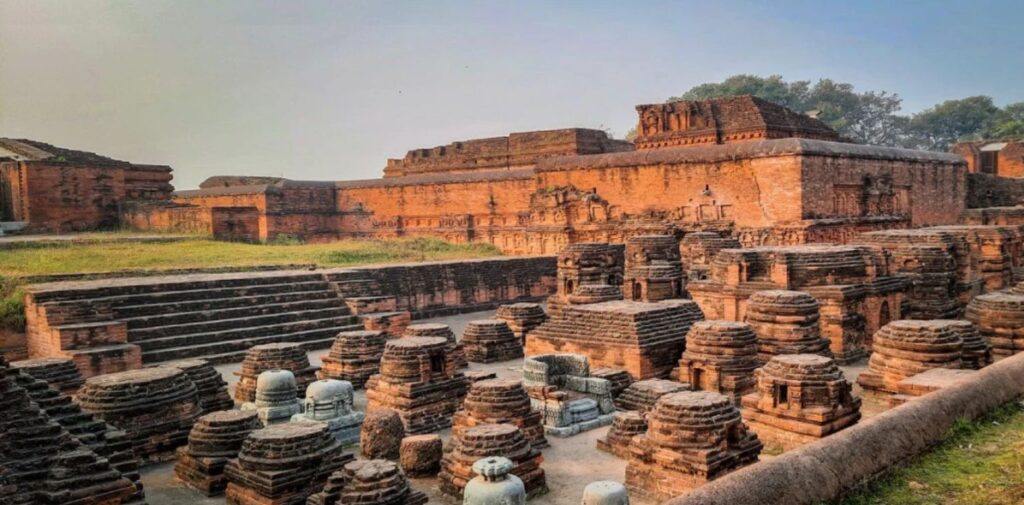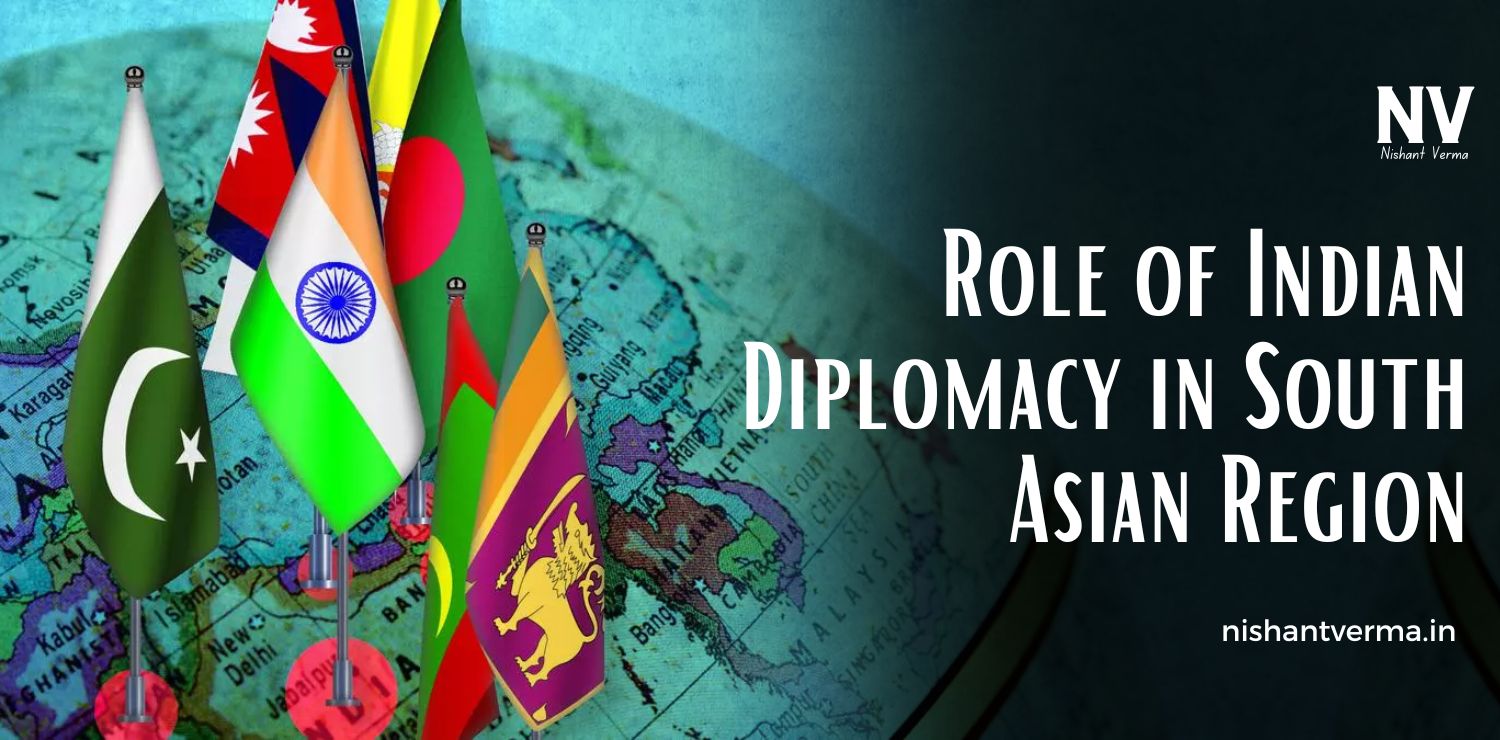Ancient Indian universities, particularly Nalanda and Takshashila, played a significant role in shaping the knowledge and intellectual culture not just in India, but across the world. These institutions were centres of learning that attracted scholars, students, and intellectuals from various parts of Asia and beyond. They laid the foundation for various fields of study such as mathematics, astronomy, philosophy, medicine, and literature. Let us explore how these great centres of learning contributed to the development of world knowledge and their enduring legacy.
Takshashila: The First Great University
Takshashila, located in present-day Pakistan, is considered one of the first great universities of the ancient world. It existed from around 700 BCE to 500 CE and was a hub for learning and education. The name “Takshashila” itself means “the hill of a scholar,” and the university was situated in a region known for its academic brilliance.
At Takshashila, students were taught a wide range of subjects, including grammar, medicine, law, music, mathematics, astronomy, and military science. It was not just an academic institution but also a centre where students were trained to become effective leaders, diplomats, and warriors. The university attracted people from different regions, and scholars from places as far as Greece, China, and Central Asia came to learn there.
One of the most notable aspects of Takshashila was its diverse curriculum. Students had the freedom to choose their areas of interest, and they were trained in practical skills that helped them make meaningful contributions to society. The university emphasized the importance of critical thinking, debate, and intellectual exchange, which greatly influenced the development of Indian and world knowledge.
One of the most famous scholars associated with Takshashila was Chanakya, a great teacher, philosopher, and strategist. Chanakya is best known for his work Arthashastra, an ancient Indian treatise on statecraft, economics, and military strategy. His teachings on governance and diplomacy are still relevant today, making Takshashila an important centre in the intellectual history of India and the world.

Nalanda: A Beacon of Knowledge
Nalanda, located in present-day Bihar, India, was another great centre of learning in ancient India. It existed from the 5th century CE to the 12th century CE and is often considered one of the most advanced educational institutions of its time. Nalanda was not just a university; it was a vast complex that included dormitories, libraries, and lecture halls, where thousands of students studied under the guidance of renowned scholars.
Nalanda was known for its comprehensive curriculum, which covered subjects such as Buddhist philosophy, logic, grammar, medicine, mathematics, astronomy, and metaphysics. It was a centre where Buddhist scholars came to study and teach, making it one of the most important hubs for the spread of Buddhist knowledge across Asia.
The university attracted scholars from various parts of the world, including China, Korea, Tibet, Mongolia, Japan, and Southeast Asia. One of the most famous visitors to Nalanda was Xuanzang, a Chinese Buddhist monk, who spent several years at Nalanda and later wrote extensively about his experiences. His writings provide valuable insights into the intellectual atmosphere of Nalanda during its peak.
Nalanda also played a significant role in the transmission of knowledge to the rest of the world. Many of the manuscripts and texts studied in Nalanda were later taken to other parts of Asia, contributing to the spread of Buddhism and Indian philosophy. The university’s influence extended to places like China and Japan, where the teachings of Nalanda scholars helped shape the development of Buddhist thought.

Key Contributions of Nalanda and Takshashila to World Knowledge
- Advancement in Mathematics: Ancient Indian scholars at both Nalanda and Takshashila made significant contributions to mathematics. Indian mathematicians such as Aryabhata, Brahmagupta, and Bhaskara were pioneers in fields like algebra, trigonometry, and the concept of zero. These mathematical ideas, developed and refined in these universities, later travelled to the Arab world and, from there, to Europe, where they became the foundation for modern mathematics.
- Astronomy: Both Nalanda and Takshashila were known for their studies in astronomy. Indian astronomers observed celestial bodies and developed sophisticated models of the universe long before similar developments occurred in Europe. They understood the Earth’s rotation, the movement of planets, and the concept of time, which influenced the development of calendars and navigation techniques across the world.
- Medicine and Health Sciences: Ancient Indian universities also contributed to the field of medicine. Scholars at Nalanda, such as Jivaka, were well-versed in anatomy, surgery, and the use of herbs in healing. The medical knowledge produced at these institutions was later shared with other countries, especially in Central Asia and the Middle East, and influenced the development of traditional medicine in many cultures.
- Philosophy and Logic: Nalanda and Takshashila were crucial in the development of Indian philosophy, particularly in the areas of logic, metaphysics, and ethics. Philosophers like Nagarjuna and Vasubandhu, who studied and taught at Nalanda, played a key role in developing Buddhist philosophy. Their ideas on logic and the nature of reality helped shape the philosophical traditions in India, China, and beyond.
- Buddhism and Spiritual Knowledge: Nalanda, in particular, was a centre for Buddhist learning, where scholars and monks engaged in the study of Buddhist scriptures, philosophy, and meditation techniques. The knowledge produced at Nalanda spread across Asia, influencing countries such as China, Korea, Japan, and Southeast Asia, where Buddhism continues to have a significant cultural and spiritual impact.
- Cultural Exchange: Both Takshashila and Nalanda were not just centres of academic excellence but also hubs of cultural exchange. Scholars from different parts of the world came to learn, share ideas, and exchange knowledge. This melting pot of ideas led to the blending of different cultures, languages, and philosophies, which enriched the intellectual and spiritual life of Asia.

Decline of Nalanda and Takshashila
Despite their great achievements, both Nalanda and Takshashila eventually declined. Takshashila fell into decline around the 5th century CE due to invasions and political instability. Nalanda met a similar fate when it was destroyed by invaders in the 12th century CE, marking the end of an era for Indian learning.
The destruction of Nalanda is often seen as a tragic loss, as thousands of manuscripts, texts, and valuable knowledge were lost in the flames. However, the legacy of Nalanda and Takshashila lives on in the intellectual traditions they helped shape. Many of the ideas and knowledge developed in these universities continue to influence the world today, from the concepts of zero and calculus in mathematics to the philosophical teachings that continue to inspire millions of people.
Conclusion
The ancient Indian universities of Takshashila and Nalanda were far ahead of their time in their contribution to world knowledge. They played a crucial role in preserving, developing, and sharing knowledge in a wide range of fields. These institutions were not only centres of education but also symbols of intellectual curiosity and cultural exchange.
Their teachings and discoveries laid the foundation for many modern fields of study, and their influence can still be seen in various aspects of our lives today. Despite the passage of time and the challenges they faced, the legacy of Nalanda and Takshashila continues to inspire generations of students, scholars, and thinkers across the world. These ancient universities remind us of the power of knowledge to transcend borders, cultures, and time.




